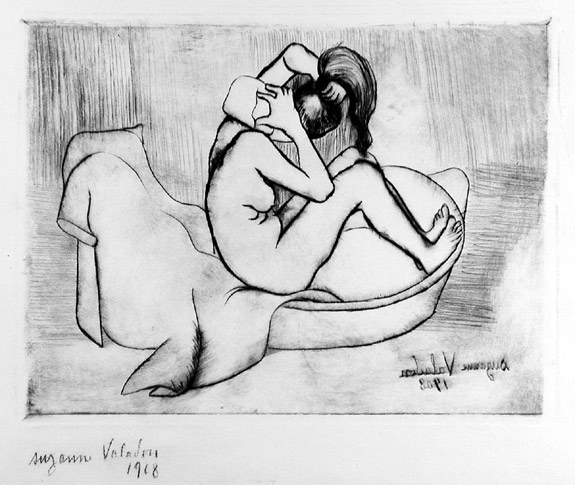|
SUZANNE VALADON
(Bessines, Haut Vienne 1865 – 1938 Paris)
Marie au Tub s’épongeant

Marie au Tub s’épongeant
Ref: Roger-Marx 13, Petrides 13
165 x 220 mm
Drypoint, 1908.
A rare early proof, signed in pencil and dated.
A stunning velvety impression, rich in burr.
Sold
To view a higher resolution version of this print, please click this link: Valadon Print
|
|
Additional
Information about the Print
An exception among the ‘Parisian’ women artists of her time in not coming
from the middle or upper classes, at the age of fifteen Valadon had become
a circus acrobat.
After an accident she took up modelling for artists instead
and developed an interest in painting and printmaking herself.
Degas taught her to etch in 1895. She took up drypoint in 1908 (scratching
the image directly into the plate, rather than biting with acid).
Her printmaking, generally domestic studies of children and female nudes,
was confined to these early years and after 1910 she concentrated on painting.
She did not formally publish her early prints until 1932, and early proofs
from the date of their execution, as here, are extremely rare.
Drypoint is an etching-related intaglio process in which, as it name suggests,
no liquid acid is used.
The artist needles directly into the raw copper surface.
The needle raises a shaving of metal at the edges of the lines which holds
ink when the plate is inked for printing, resulting in a thick velvety ‘burr’.
For more information, and further examples of drypoints and other Intaglio forms of printmaking, please explore the Drypoint page in the Techniques section of this website.
|